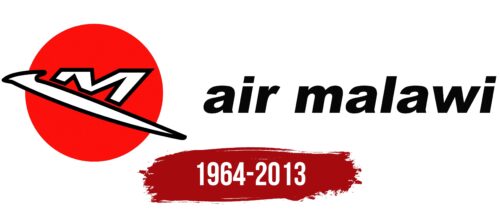Air Malawi: Brand overview
Air Malawi was established in March 1964, shortly after Malawi became independent from Britain. The newly formed Republic of Malawi government established the airline as the country’s national carrier to enhance global connectivity.
The airline operated from Blantyre International Airport, in Blantyre, Malawi’s largest commercial and industrial hub. It started with two small 18-seater Handley Page Jetstream turboprop aircraft from Britain, focusing initially on domestic flights within Malawi.
In 1967, Air Malawi expanded its fleet by adding the BAC One-Eleven, which could seat up to 89 passengers. This allowed the airline to start international flights to Zambia, Tanzania, and Zimbabwe.
During the 1970s, Air Malawi introduced more advanced jets, such as the Boeing 707 and Boeing 737-200, enabling flights to the Middle East, southern Africa, and Europe.
By the late 1980s, the fleet had grown to include six planes, including the wide-body Boeing 767-200ER, servicing over 20 regular routes.
Financial challenges emerged in the 1990s due to inefficient resource management and ambitious expansion efforts, leading to numerous underbooked flights.
From 2003 to 2006, the airline underwent a restructuring that included partial privatization and upgrading its fleet to the more modern Boeing 737-300/800. Nevertheless, financial difficulties continued.
In February 2012, the Malawian government shut down the national carrier due to unsustainable financial issues and an inability to manage its debts.
Air Malawi’s final flight took place on January 31, 2013. At its closure, the airline had only three Boeing 737-300/800 aircraft remaining.
The airline’s discontinuation significantly impacted Malawi’s transportation system and reduced global connectivity.
Throughout its nearly five decades, from 1964 to 2013, Air Malawi played a key role in developing the nation’s aviation links. Unfortunately, persistent financial problems eventually led to its closure.
Following the shutdown, the Malawian authorities have been considering establishing a new national airline, although specific plans have yet to be made.
Meaning and History
What is Air Malawi?
It is Malawi’s national airline, based at Lilongwe International Airport, offering regular passenger and cargo services to various destinations within the country and neighboring African countries. The company operates a fleet of narrow-body aircraft, such as the Boeing 737 and Bombardier Dash 8, providing reliable connections between key cities and tourist destinations in Malawi.
1964 – 2013
The Air Malawi logo features the sun, which symbolizes the hot African climate and is part of the flag of the Republic of Malawi. The sun is the same red color as the national emblem but in a different shape: in this case, it is a large circle without rays. This circle serves as a background for a stylized plane consisting of a wide diagonal stripe and an uneven white letter “M.” The two halves of the letter “M” represent two wings. Next to it is the full name of the airline. The lowercase black glyphs are written in bold type with smooth curves and square dots above the “i.”
The lack of sunlight simplifies the design, making it easily reproducible on various media. The stylized airplane is a creative way to incorporate an element of a company’s service into its branding. The font’s features, such as square dots and smooth curves, give it personality, setting the airline apart from its competitors.
FAQ
What is the airline code for Air Malawi?
Air Malawi is identified by two different codes: the IATA code and the ICAO code. The IATA code, QM, is a two-letter code used mostly for ticketing and scheduling. The ICAO code, AIM, consists of three letters and is used in air traffic control and various airline operations like flight planning. The airline uses the callsign MALAWI for radio communications during flights. These codes are essential for recognizing Air Malawi in global aviation systems.
What happened to Air Malawi?
Air Malawi was Malawi’s national airline, and it stopped operating in February 2013 after nearly 50 years. The airline started having problems when it tried to deal with South African Airways in 2003 and Comair in 2007, but both failed. The reasons for these failures were not made public, although such issues come from financial disagreements or regulatory problems.
After these unsuccessful deals, Air Malawi faced serious financial issues. It was hard for the airline to make money, a typical problem for smaller, national airlines competing with larger international ones. By 2012, it was clear that the airline couldn’t keep running without new investment. Unfortunately, they couldn’t find any new investors or buyers. The airline’s financial and operational problems worsened without new funds or partners. With no one interested in buying or investing in the airline, the decision was made to close down Air Malawi. This happened in February 2013.
Who owns Malawian Airlines?
Malawian Airlines is Malawi’s national airline. Two main groups own it. The Malawi Government owns 51% of the airline, giving it the majority control. Ethiopian Airlines owns the other 49%. Ethiopian Airlines brings valuable aviation experience to the partnership. This arrangement allows Malawian Airlines to operate efficiently while keeping most of its ownership within Malawi.
What planes does Malawi Airlines use?
Malawi Airlines has three types of aircraft in its fleet, each tailored to specific travel needs.
- The first is a Boeing 737-752(WL), registered as ET-AVP. It was delivered on October 23, 2023, and has been flying for over twenty years. It’s known for dependable service on short—to medium-haul flights.
- Next is the Boeing 737-860(WL), with registration ET-APO. It joined the fleet on December 1, 2022. This plane has 16 Business Class and 138 Economy Class seats, suitable for busier routes. At about 11.5 years old, it shares the reliable features of the Boeing Next Generation series.
- The third aircraft is the Bombardier DHC-8-402Q Dash 8, registered as ET-AQB. It arrived on January 29, 2014. It’s perfect for shorter regional journeys, with 7 Business classes and 60 Economy seats. The Dash 8 efficiently connects smaller cities and airports.
These aircraft allow Malawi Airlines to efficiently manage a variety of routes, meeting the needs of its passengers across different distances.





